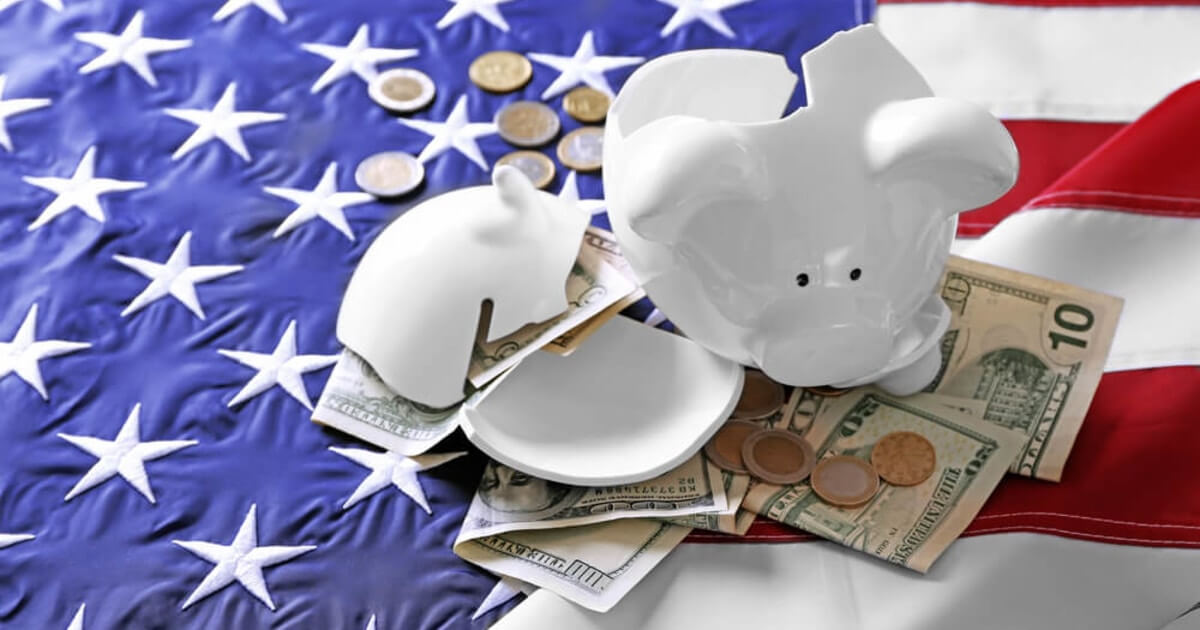A Brief History of US National Credit Defaults
Which nation’s credit is the most reliable? Many casual economic observers would say “America” without hesitation. But do the United States really have a stellar-credit record? No actually, not really at all. In fact, a conscientious look over the last few centuries would reveal that the nation’s brief history is riddled with national credit defaults.

Which nation’s credit is the most reliable? Many casual economic observers would say “America” without hesitation. But do the United States really have a stellar-credit record? No actually, not really at all. In fact, a conscientious look over the last few centuries would reveal that the nation’s brief history is riddled with national credit defaults.
Let’s take a quick look at a few of the events that brought the perceived super-economic powerhouse to its knees, in our brief history of US national credit default.
(1) The 1790 default
Almost immediately after the United States was founded, its very first President, George Washington, signed the Funding Act of 1790. The new world had been founded in the wake of an expensive and bloody Revolutionary War and by signing this act, the new federal government of the United States would absorb the war debt of its constituent states.
The act essentially delayed interest payments on the debt until 1801 and although it ultimately helped the nation, it goes down as the first US national credit default.
(2) The 1861 default
By the 1860s, the US. was at war again, this time with itself in what is now known as the American Civil War. The US federal government began to issue notes that could be redeemed for gold in 1861, these were called ‘greenbacks’ which are now the basis for the current dollar. The first greenback issued were termed demand notes.
By February of 1862 however, greenbacks no longer gave their holder the right to demand anything as the Legal Tender Laws came into play and were in retroactive effect. The federal government had depleted its gold and silver reserves and bypassing the law, the demand notes held prior to this were now simply legal tender, essentially transferring the paper money’s value peg from gold to the health of the creditor or individual bank issuing the currency.
The US printed around $400 million dollars during this period and the value of the greenback fluctuated dependant on the success of the North throughout the civil war. Due to the incredible amount of notes created, the value of the greenback fell steadily against the value of gold and the US experienced its second national default.
(3) The 1933 default
The root cause of the default of 1933 actually began in 1917, shortly after the US. entered World War I.
To fund its efforts, the US Congress passed the First and Second Liberty Bond Acts. These war bonds introduced the idea of financial securities to US citizens. There was also a patriotic duty attached to these bonds and they were heavily pushed to the public as a means of demonstrating their support for the allied forces.
Up until the 1930s, there were several iterations of the Liberty bonds, each one absorbing the debt of the previous version as the earlier bonds were legally exchangeable for the later ones.
The Liberty bonds included a gold clause that required them to be redeemable in gold. However, the outstanding Liberty bonds exceeded the countries gold reserves causing depreciation in the value of the bonds.
In 1933, unable to pay back gold on the Liberty bonds, the United States Congress passed House Joint Resolution 192 upon the request of President Roosevelt. The resolution also became known as the “Gold Repeal Joint Resolution”, officially served as a declaration of bankruptcy and explicitly stated that demanding payments in gold or in any other form would be against public policy. In conjunction was the passing of Executive Order 6102, which ordered that all gold in circulation was to be delivered to the Federal Reserve under threat of fines or imprisonment.
Chief Justice Charles Evans Hughes, who wrote the majority opinion, described the resolutions as “immoral” but legal.
(4) The 1971 default
Following World War II, the allied nations signed up to the Bretton Woods agreement. Most of the Allied Nations had exhausted their gold reserves and the United States held three-fourths of the world's supply of gold. No other currency had enough gold to back it as a replacement. The dollar's value was 1/35 of an ounce of gold.
Bretton Woods allowed the world to slowly transition from a gold standard to the US dollar standard. Under the agreement, the countries promised that their central banks would maintain fixed exchange rates between their currencies and the US. dollar. By so doing, it established America as the dominant power in the world economy. After the agreement was signed, America was the only country with the ability to print dollars.
The collapse of the Bretton woods agreement was a result of the gradual loss of confidence in the US. dollar. In May 1971, West Germany left the Bretton Wood system and Switzerland redeemed USD 50 million for gold. In early August 1971, France sent a warship to New York Harbor and redeemed USD 191 million from the New York Federal Reserve Bank. On August 11, the British ambassador requested to redeem USD 3 billion of gold. These gold withdrawals have placed mounting pressure on US.’s long term gold reserves. In an attempt to protect the remaining US. gold reserves, President Nixon removed the dollar from the gold standard. By dissolving the Bretton Woods agreement, Nixon and his globalist accomplice, Henry Kissinger, knew global demand for the dollar would decline. Since then, the US. gold reserves have remained unchanged.
Image source: Shutterstock
